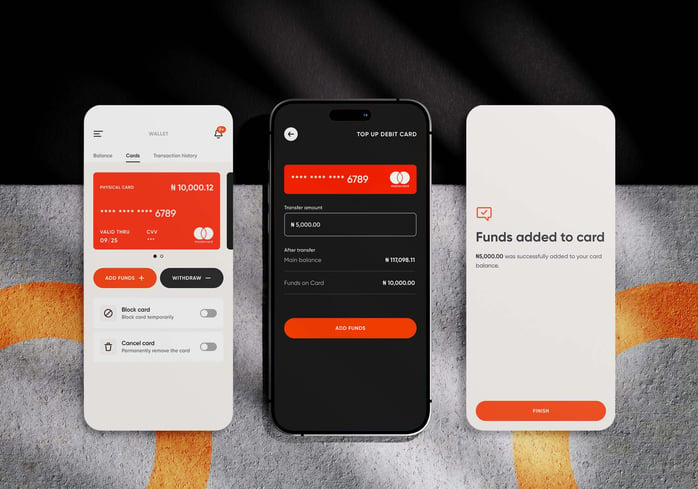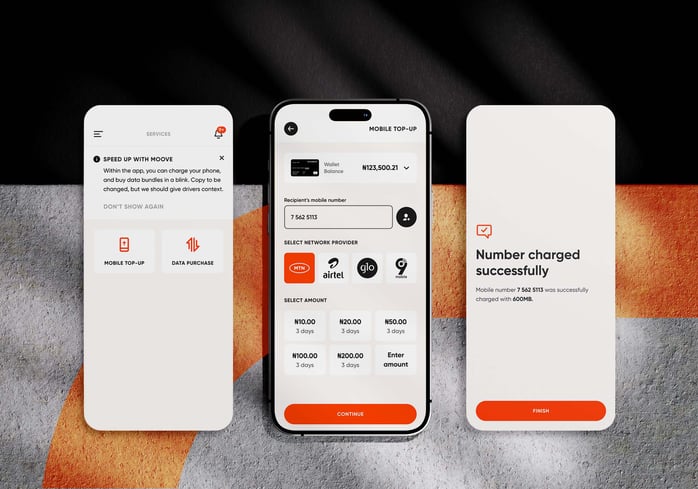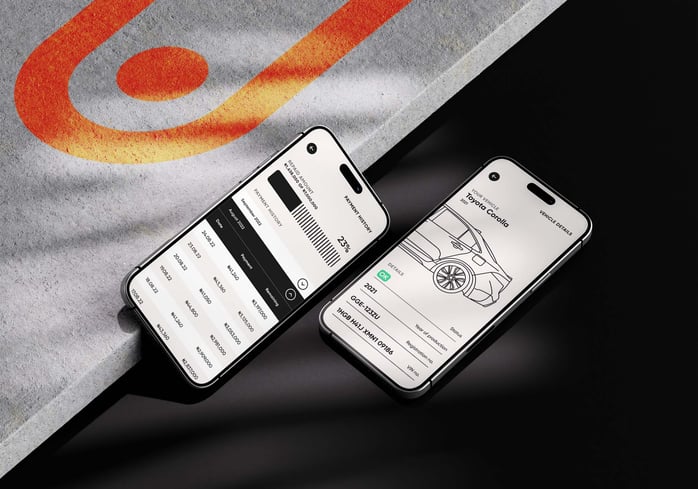Building an App for the World's First Mobility Fintech Expanding Across Three Continents
Moove wanted to build an app – e-logistic, ride hailing, and last minute delivery – that would bring their customers into the financial ecosystem, providing them with an all-in-one solution to send and receive payments, check their vehicle plan, and track their KPI’s. Netguru teamed up with the client’s engineers to produce an MVP product.

The client
Moove is an African-born global start-up and the world’s first mobility fintech, providing revenue-based vehicle financing and financial services to mobility entrepreneurs.
By embedding its alternative credit scoring technology onto ride-hailing, e-logistics, and last minute delivery platforms, Moove uses proprietary performance and revenue analytics to underwrite loans to drivers that have previously been excluded from financial services.

The challenge
Ride-hailing drivers didn’t have a central communication and financial tool for their banking and business requirements. They communicated typically via Whatsapp or mobile phone.
Moove wanted to build an intuitive all-in-one application for drivers to allow them to transact anywhere and anytime, send and receive payments, check their vehicle details and plans, and keep track of performance KPIs more efficiently, productively, and successfully.
The Moove app was designed to be the primary channel for drivers to access all of Moove’s products and services.
It had to be scalable across 13 markets in 9 countries with additional expansion plans. As such, the app had to meet the needs of end-users from multiple cultural setups, with different user habits, tech literacy levels, and unreliable internet connectivity.
Moove also planned to create a digital Wallet to enable digital transactions. The feature was built by a different team led by a Moove PM, but remained part of the app. As a result, two teams – Driver and Wallet – had to cooperate to deliver a single product, while remaining in compliance with all of the legal and regulatory requirements from the local financial authorities.

The scope
The client approached Netguru to build a complex app MVP from scratch: an Android super-app architecture scalable across multiple geographies.
We were responsible for:
- Product discovery
- Providing the product strategy and roadmap
- Product design
- Software development (JS, Java, Python)
The MVP was to offer drivers the following functionalities:
- Keeping track of their performance KPIs
- Checking plan and vehicle details
- Sending and receiving payments via Wallet
- Managing earnings and expenditures
- Editing their profile
- Accessing adjacent productivity services such as reconciliation with Moove
- Contacting customer support

The journey
Netguru teamed up with Moove’s engineers to form an independent product squad that was part of the client’s product ecosystem.
We were assigned full ownership in terms of defining user problems, designing the product, choosing the approach, and deciding on the best delivery methodology.
We worked in Agile, Scrum, and Lean Startup methodologies.
The process comprised six phases:
- Product discovery – defining the problem and the solution using the Double Diamond discovery model and Lean Startup’s build-measure-learn cycle
- Tech discovery – determining data sources and dependencies, API communication, app architecture, security recommendations, and infrastructure
- Product strategy – creating a roadmap and a rollout plan, and defining product success metrics
- Soft launch – first version of the MVP was delivered for beta testing to the first cohort of drivers in Nigeria (direct feedback sessions with drivers conducted remotely)
- Scale-up – creating a release plan, timeline, risk mitigation strategy, and a dependency map for discussion with respective internal Moove teams and stakeholders; performance testing in preparation for significant traffic increase
- MVP launch – regular releases across different geographies, consisting of user testing and feedback sessions with new cohorts of beta users

The results
- Moove received a fully functional MVP with architecture allowing for scale-up to multiple geographies, which helped the company achieve its business goals and meet its commitments to investors.
- Moove’s drivers gained a working tool that solved their daily problems.
- Product goals, including The North Star product metric, contributed to meeting the company’s OKRs.
The team delivered all of the required artifacts:
- Product artifacts – product strategy, roadmap, backlog, user stories, product requirements documents, product success metrics, process, and flow diagrams
- Project artifacts – delivery approach, scale-up rollout plan, dependency maps
- Tech artifacts – infrastructure diagrams and reports from quality assurance tests
- User research artifacts – reports from user research, recordings from sessions with users